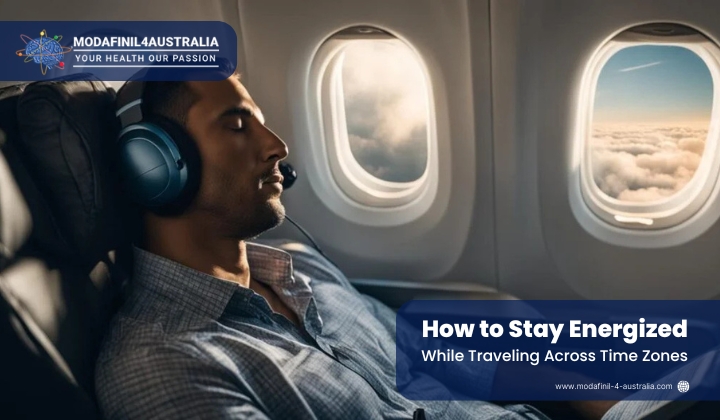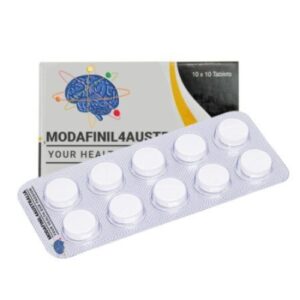
How to Stay Energized While Traveling Across Time Zones
Introduction
Everyone wants to stay energized while traveling. Staying energized can help people enjoy their travel fully. Traveling across time zones and through various modes of transport can be exciting and exhausting, whether flying internationally, embarking on a long train journey, driving cross-country, or even traveling by ship.
To get the most out of your journey, you must be energised. But if you feel sleepy or tired, all the enjoyment gets spoiled. In this blog, we will explore practical tips and strategies to help you maintain your energy levels, regardless of how you’re traveling.
10 Tips to Stay Energized While Traveling
1. Understanding Travel Fatigue
What Causes Travel Fatigue?
Travel fatigue arises from physical discomfort, disrupted sleep patterns, dehydration, and stress. Every travel method has its own set of difficulties. Like:
- Air Travel: Prolonged sitting, cabin pressure, and jet lag from crossing time zones.
- Train Travel: Long hours of travel, limited movement, and noise disruptions.
- Truck Driving: Long-haul trips with irregular schedules and lack of proper rest.
- Ship Travel: Motion sickness, irregular sleep due to the ship’s schedule, and limited exercise.
- Car and Bike Travel: Continuous driving or riding can cause physical strain and mental fatigue.
2. Pre-Travel Preparations
Planning Your Route and Schedule
- Choose travel timings that align with your body’s natural rhythms when possible.
- Plan for layovers stops, or breaks to rest and recharge during your journey.
Packing Essentials for Comfort and Energy
- Travel pillows, blankets, and eye masks for better rest.
- Nuts, fruits, and protein bars are examples of nutritious snacks.
- A reusable water bottle to stay hydrated.
- Portable chargers and gadgets to keep your devices running.
Adjusting Your Sleep and Diet in Advance
- Adjust your bedtime routine gradually to the time zone of your location.
- Eat light meals before traveling to avoid digestive discomfort.
3. Strategies for Staying Energized During Travel
Air Travel: Managing Jet Lag and Cabin Comfort
- Stay hydrated, as airplane cabins can be dehydrating.
- To increase circulation, walk around the living space every several hours.
- Use sleep aids like neck pillows and noise-canceling headphones to rest.
Train Travel: Staying Comfortable on Long Rides
- Stretch during stops or in the aisles.
- Bring a travel blanket and pillow for overnight journeys.
- Choose seats with more legroom.
Car and Bike Travel: Combatting Road Fatigue
- Every two to three hours, take a little pause to relax and rejuvenate.
- Share driving or riding responsibilities if traveling with others.
- Use ergonomic cushions to support your back and reduce strain.
Truck Driving: Energy Management for Long-Haul Drivers
- Maintain a regular sleep and eating regimen.
- Incorporate quick exercises during breaks, such as walking or stretching.
- Use caffeine strategically, but avoid over-reliance.
Ship and Boat Travel: Coping with Sea Sickness and Fatigue
- Use anti-motion sickness medication or wristbands if needed.
- Spend time on deck to get fresh air and natural light.
- To maintain mental stimulation, take part in shipboard activities.
4. Tips for Staying Active on the Go
- In Tight Spaces (Planes, Trains, Cars): Perform seated stretches like ankle rolls, shoulder shrugs, and neck tilts.
- During Layovers and Stops: Take brisk walks, do light yoga, or perform simple bodyweight exercises.
Expert Tips:
1. MODALERT 100 MG

Modalert 100 mg is a product of Modafinil, a popular nootropic medication that promotes wakefulness and enhances cognitive function. Modalert is commonly prescribed to treat conditions like narcolepsy, obstructive sleep apnea, and shift work sleep disorder, where excessive daytime sleepiness can impair quality of life and productivity.
Key Features of Modalert 100 mg:
- Active Ingredient: Modafinil, a eugeroic (wakefulness-promoting agent), is the primary component of Modalert.
- Dosage: The 100 mg dose is a standard option, providing balanced effects for users who may not require higher doses like 200 mg.
Effects:
- Enhances alertness and wakefulness.
- Improves focus, concentration, and mental clarity.
- Reduces fatigue and lethargy, particularly in people with sleep disorders.
- Boosts productivity for individuals requiring extended periods of focus.
2. ARTVIGIL 150 MG

Artvigil 150 mg is a popular medication primarily used to promote wakefulness and improve alertness in individuals experiencing excessive sleepiness caused by conditions such as narcolepsy, obstructive sleep apnea (OSA), and shift work sleep disorder (SWSD). The active ingredient in Artvigil 150 mg is Armodafinil, a compound renowned for its cognitive-enhancing and mood-boosting effects.
Key Features of Artvigil 150 mg:
- Active Ingredient: Armodafinil, a eugeroic (wakefulness-promoting agent), is the primary component of Artvigil, providing a focused and sustained wakefulness effect.
- Dosage: The 150 mg dose is a standard and effective option, offering a balanced approach to improving alertness without being overly stimulating.
Effects:
- Promotes wakefulness and reduces excessive sleepiness.
- Enhances focus, concentration, and mental clarity.
- Improves productivity for individuals requiring long periods of sustained attention.
- It reduces fatigue, making it suitable for people with sleep disorders like narcolepsy, OSA, or SWSD.
- Long-lasting Impact: Artvigil’s effects can last up to 12–15 hours, ensuring a full day of productivity and alertness.
- Milder Side Effect Profile: Compared to similar medications, Artvigil is gentler, with fewer reported side effects, making it a preferred choice for those seeking reliability with minimal discomfort.
5. Maintaining Proper Nutrition and Hydration
- Consume short, well-balanced meals that include healthy fats, carbohydrates, and protein.
- Steer clear of excessive caffeine and alcohol intake as they can dehydrate you.
- Drink plenty of water throughout your journey.
6. Maximizing Rest and Sleep
Finding the Best Sleeping Positions by Travel Mode
- Planes and Trains: Use neck pillows and reclining seats.
- Cars and Trucks: Park safely and use reclining seats for naps.
- Ships: Choose cabins with minimal noise and vibration.
Using Sleep Aids and Comfort Tools
- To shut out sounds, use noise-cancelling headphones or earplugs.
- Eye masks to ensure darkness even in brightly lit areas.
- Lightweight blankets for added comfort.
Managing Noise, Light, and Temperature
- To adjust to shifting temperatures, wear layers of stuff.
- Use apps that play white noise or calming sounds to drown out distractions.
7. Adapting to New Time Zones and Environments
- Resetting Your Internal Clock: Gradually align your sleep and meal times with your destination.
- Leveraging Light Exposure: Spend time outdoors in natural light to help your body adjust.
- Staying Energized in Changing Climates: Dress appropriately and stay hydrated to handle temperature changes.
8. Travel-Specific Tips
Business Travelers: Balancing Work and Rest
- Plan your schedule to include downtime for rest.
- Use productivity tools to manage work efficiently.
Recreational Travelers: Making the Most of Your Time and Energy
- Prioritize activities and avoid overloading your travel plans.
- Take time to relax and enjoy the journey.
9. Essential Tools and Gadgets for Energy on the Trip
- Portable Power Banks: Keep devices charged for entertainment and productivity.
- Travel-Friendly Fitness Tools: Resistance bands or compact yoga mats.
- Apps: Time zone trackers, meditation apps, sleep aid apps, and personalized travel assistant apps that help plan and optimize your journey.
10. Dealing with Post-Travel Recovery
- Techniques to Reenergize After Long Journeys: Light exercise, a nutritious meal, and adequate sleep.
- Easing Back into Daily Routines: Gradually resume your regular schedule to avoid overwhelm.
Conclusion
Traveling across time zones and using different modes of transport can be an adventure—and with the right approach, it can also be energizing and fulfilling. Embrace the journey as an opportunity to discover new rhythms, experiment with strategies that keep you vibrant, and enjoy adapting to change. Whether you’re soaring through the skies, cruising the seas, or hitting the road, staying energized is about making smart choices and savoring every moment. Balance is the secret—between effort and ease, planning and spontaneity, and work and play. Keep moving, stay curious, and make your travels unforgettable.
FAQ’s
Q1. How can I stay energized during long flights?
Ans. Stay hydrated, move around the cabin regularly, and rest with travel pillows or noise-canceling headphones. Avoid heavy meals and limit caffeine consumption.
Q2. What should I pack to stay comfortable during extended travel?
Ans. Essentials include a neck pillow, lightweight blanket, eye mask, healthy snacks, a reusable water bottle, and portable device chargers.
Q3. How can I quickly adjust to a new time zone?
Ans. Before traveling, gradually shift your sleep and meal times. Upon arrival, spend time outdoors in natural light and avoid napping too long during the day.





